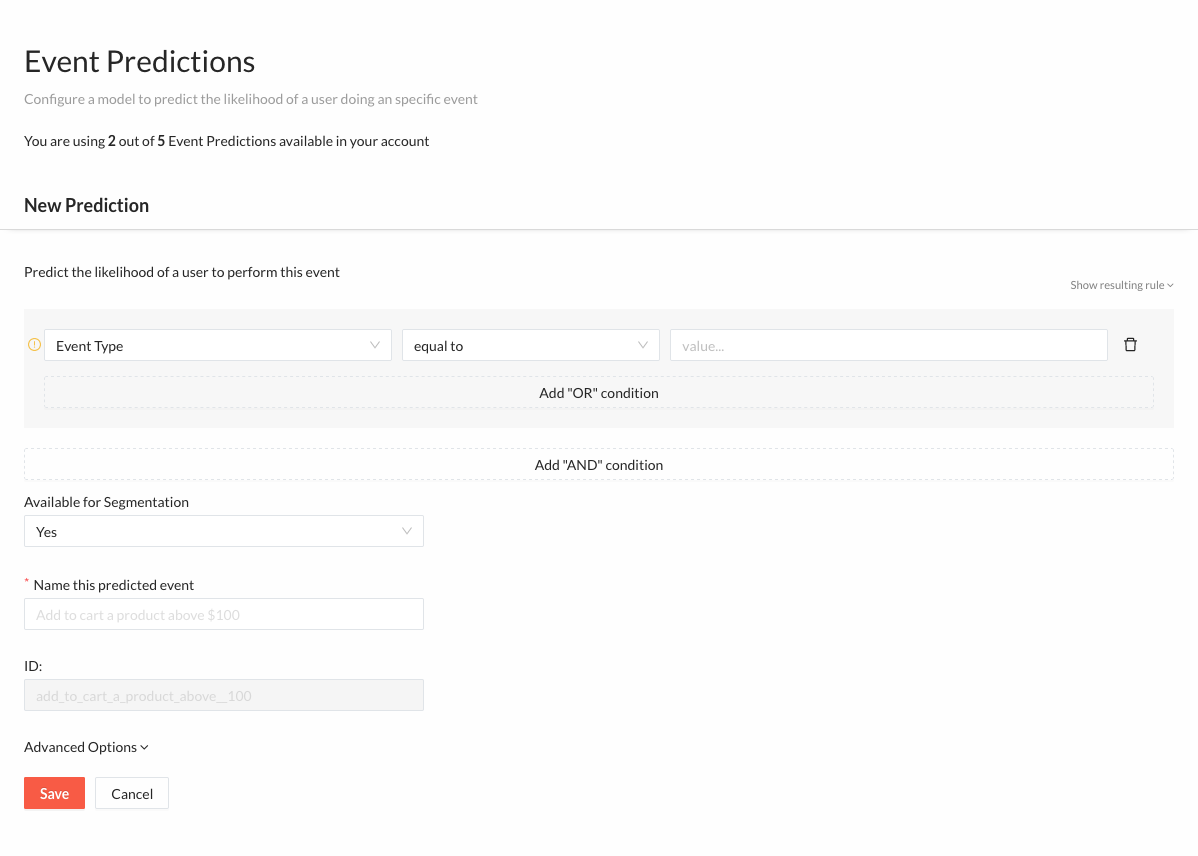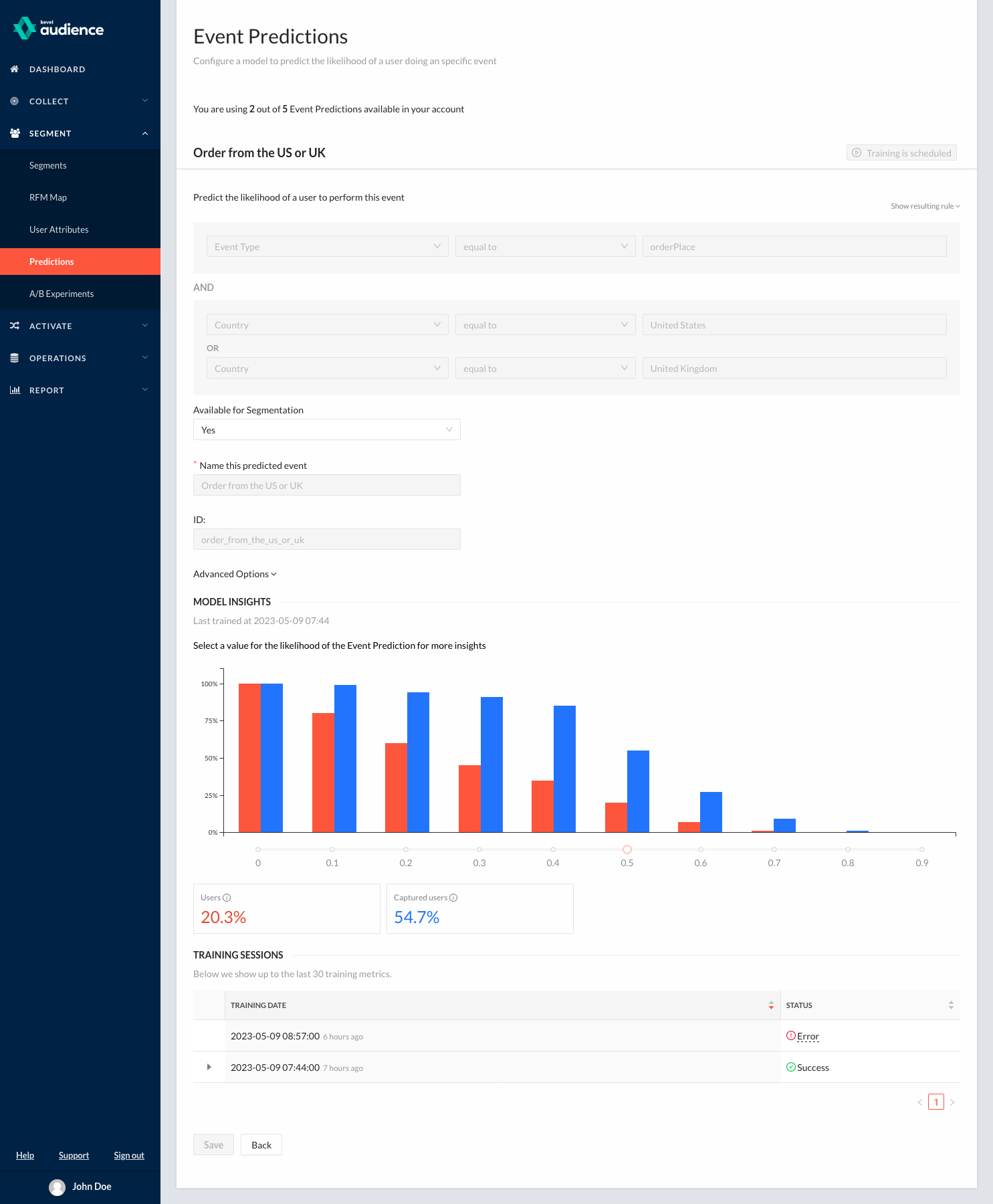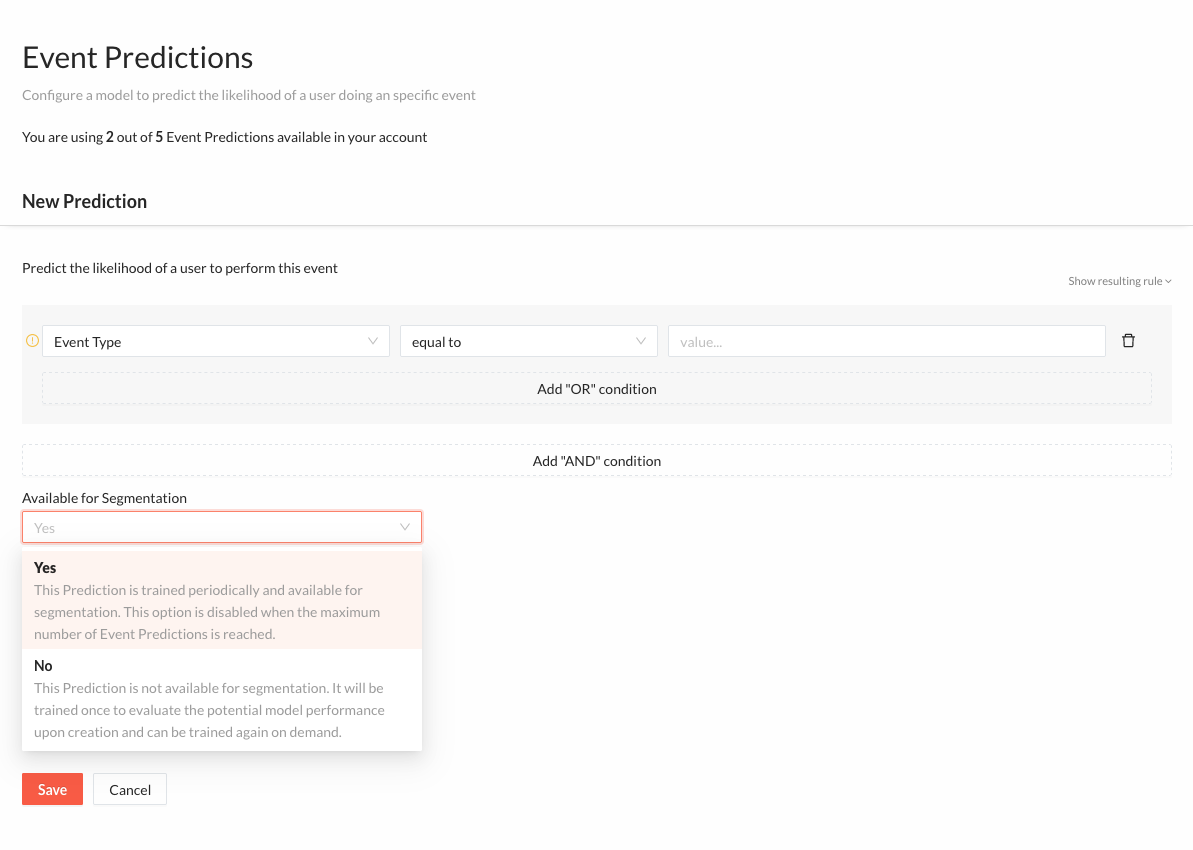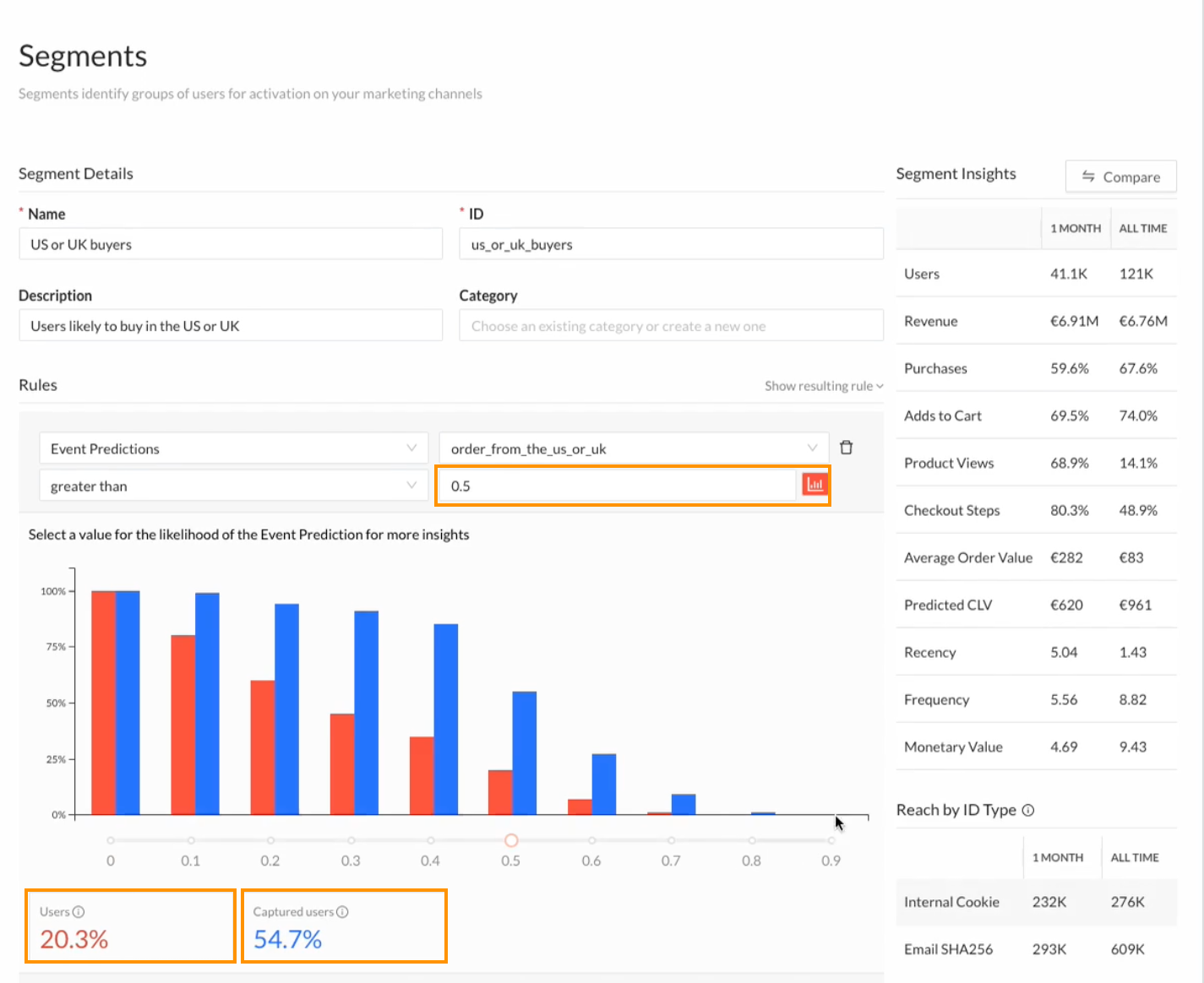Predictions
Kevel Audience leverages machine learning to identify high-value users from their historic behavior. It provides access to Predictive Models that identify patterns in captured data and delivers recommendations or behavior predictions for specific users in the form of Predictive User Attributes, which are automatically generated and updated.
Kevel Audience provides two types of Predictions: Default and Event-based. Default Predictions are prebuilt for all customers and enable well-researched marketing strategies. Event Predictions provide the flexibility of defining a target event and leveraging predictive models to identify users likely to perform that event. Event Predictions can be configured under the Segment > Predictions option on the side menu.
Default Predictions
Kevel Audience provides a set of default Prediction that do not require any configuration and whose attributes are readily available for segmentation. For more information visit the Default Predictive Attributes section.
Event Predictions
Event Predictions have the goal of identifying users that are likely to perform a target event in the future. This event is defined by a event filter rule which is created through a dedicated builder in the dashboard, equal to the one found at the custom attributes creation. Optionally, you can also configure the interval in which the event is predicted to happen, which is set by default to the next 7 days.
Models are influenced by a user's activity on the website (or app) and by contextual data about that user's visit. Note, the specific modeling strategies and signals are private to Kevel and subject to continuous improvement.

The dashboard provides current and historic insights into the diagnostic ability of the model at different discrimination thresholds. How and when Event Predictions are trained depends on their Available for Segmentation.

Available for Segmentation
The Available for Segmentation setting defines if the model should be trained and if it should generate a Predictive User Attribute:
- Yes - Event Predictions are trained in every training window and the resulting predictive attributes are generated for every user automatically;
- No - Event Predictions are trained only once after creation, in the next training window, and their predictive attributes are not generated for any user. Further training sessions can be scheduled on demand to evaluate the evolution of the resulting model.
This setting can be changed at any time on the Event Prediction configuration.

When an Event Prediction is available for segmentation, the generated Predictive User Attribute can be used for segmentation. See our Usage in the Segment Builder section on how to use it.
Limits
Kevel Audience has a limit on the number Event Predictions available for Segmentation.
However, you can use Event Predictions that are not available for segmentation to explore other Event Predictions and evaluate their resulting model without contributing to the limit. By changing the Available for Segmentation setting you can manage the set of Active Event Predictions to your current needs and update it whenever you observe a difference in the resulting model.
This limit can also be increased by request. Reach out to your customer success manager for pricing and additional details.
Usage in the Segment Builder
The predictive attributes generated by eligible Event Predictions can be selected in the Segment Builder under Predictions > Event Predictions, as seen below.
How Predictions Work
Prediction models aim to identify the likelihood of a user performing a target action, assigning a likelihood score ranging from 0.0 to 1.0. The models are trained and validated with a sample of users, which allows for estimating their performance and creating the scoring distribution as shown in the video.
While defining the segment, one must select the minimum score threshold for the user to be considered for the segment. Two metrics are available to assist in deciding the score:
Users: The percentage of users with the prediction score above the selected level. It can be interpreted as the reach of the segmentation rule. In the example, selecting a score of 0.5 or above corresponds to 20.3% of all website users.
Captured Users: The percentage of users predicted to do the target event, out of all users likely to do the target event. This value is calculated during the model validation phase. In the example, 54.7% of the users likely to do the event are included in the segment, despite it only containing 20.3% of the population.

While selecting an ideal score, one should balance how extensive the reach should be, while balancing it with how many users predicted to do the target event are considering. In the example, by selecting users with a score above 0.5, the segment will encompass about 20.3% of all users while capturing 54.7% of converters. Modifying the scoring allows for the alignment of reach and captured users with the available media buying budget.